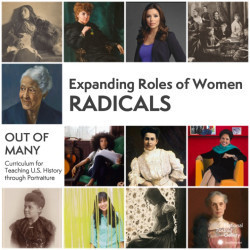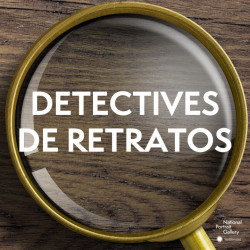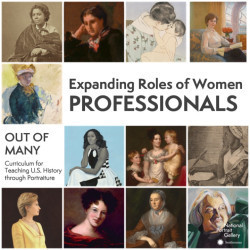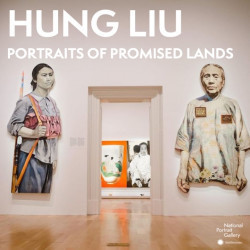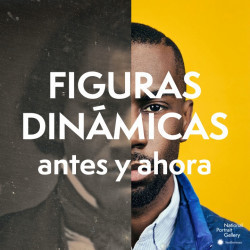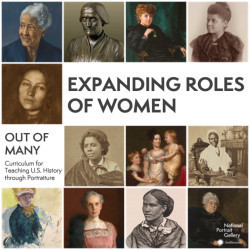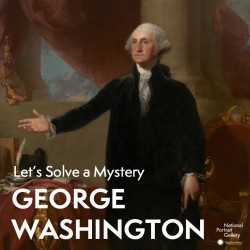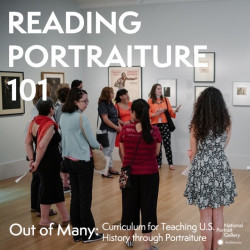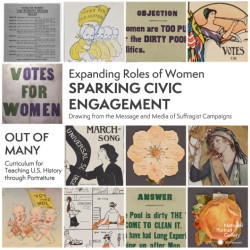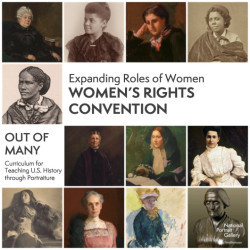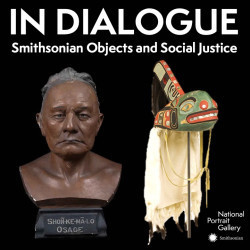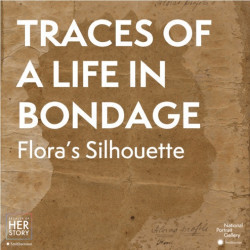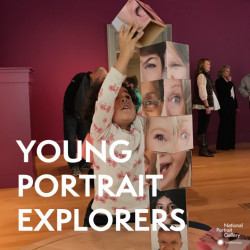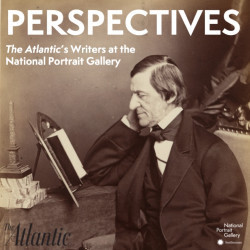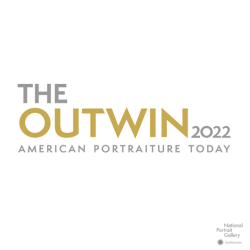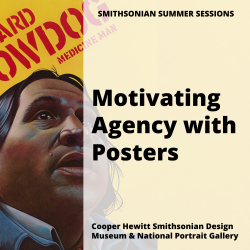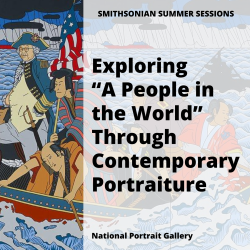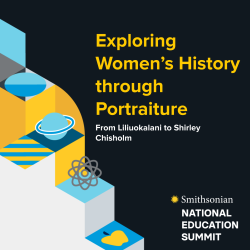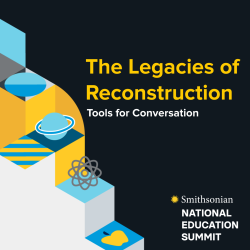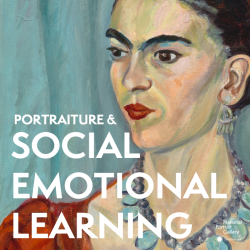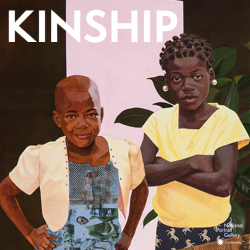Nicole Vance's collections
Expanding Roles of Women: Suffragists
<p>In this Learning Lab collection, suffragists featured in the Smithsonian’s National Portrait Gallery exhibition,<em> Out of Many: Portraits from 1600 to 1900 </em>are used as entry points to teach about the history of the suffrage during this time period. </p>
<p>During the nineteenth and early twentieth centuries, many women sought voting rights as the foundation of women’s rights, and they were often viewed as radical for having such a goal. As daughters and wives, women in the United States had few decision-making rights, let alone the right to own and control land, so having the power to make political decisions through suffrage was seen as extreme. When Elizabeth Cady Stanton initiated the first woman’s rights convention at Seneca Falls in 1848, some attendees expressed this concern. The struggle for women’s suffrage was rooted in the abolition movement and anti-slavery societies, where Black and white women organized together to end slavery. White suffragists learned from leading Black women abolitionists like Sojourner Truth and Frances Ellen Watkins Harper, who had been organizing and speaking publicly for many years before Seneca Falls. By the end of the Civil War, when voting rights for Black men were written into law, racism began to divide the suffragists.</p>
<p>Although Susan B. Anthony worked with Stanton to end slavery, they did not believe that Black men should gain suffrage before white women. In this set of Teaching Ideas, students will examine the details of this divide and discover how suffragists fought for women’s rights and social justice issues. For example, the journalist Ida B. Wells-Barnett advocated for Black women’s rights, including suffrage, and protested the lynching of African Americans. Lawyer Belva Ann Lockwood not only believed in women’s right to political representation but also in their capability of holding the highest office in the land: She ran for president in 1884 and 1888.</p>
<p>Throughout this collection, students will examine not only the portraits subjects but will also; gain insist into the larger historical time period in which the subjects lived, understand how the women in these portraits lived and located agency, and reflect on the present by considering how women continue to make changes in society.</p>
<p>This collection contains three lessons that highlight the American suffragist movement: "Reading Portraiture: Striking a Pose," "Engaging History: Unity and Division Within the Women's Suffrage Movement," and "Connections to the Present: Women Presidential Candidates."</p>
<hr>
<p><strong>Reading Portraiture: Striking a Pose</strong></p>
<p>In this lesson, students step into the roles of two leaders of the American women’s suffrage movement: Elizabeth Cady Stanton and Ida B. Wells. One of the most famous suffragists, Stanton was a founder of the National Woman Suffrage Association (NWSA) and a prolific writer and theorist of feminist thought. Wells was an investigative journalist and newspaper editor who led an antilynching campaign and fought for women’s suffrage. In addition, she founded the politically influential Alpha Suffrage Club, which aimed to give a voice to African American women who were excluded from mainstream suffrage organizations.</p>
<p>Inspired by the suffragists’ political use of the tableau vivant, or a carefully posed, motionless scene with living actors, this lesson will ask students to closely study—and bring to life—Stanton and Wells’ portraits and polemics.</p>
<p>Essential Questions</p>
<ul><li>Which Elements of Portrayal lend visual power to a portrait?</li><li>To what extent does a sitter’s pose convey a sense of authority and selfhood?</li></ul>
<p>Objectives </p>
<ul><li>Study the social and historical implications of primary sources and original works of art.</li><li>Extend the analysis of nineteenth-century portraits of suffragists into a dramatic, kinesthetic interpretation.</li><li>Identify some of the primary principles of the women’s suffrage movement.</li></ul>
<hr>
<p><strong>Engaging History: Unity and Division Within the Women’s Suffrage Movement</strong></p>
<p>Students will gain an understanding of the unity and division within the women’s suffrage movement through a two-part lesson. They will enter the lesson by considering how history is told through portraits, in terms of who is represented and who is not. The notable absence of African American abolitionists and suffragists from the Coronation of Womanhood group portrait provides a launching point to investigate why these individuals were sidelined from the women’s suffrage movement. At the same time, students will learn about instances when African American and white women came together in their struggle for equal rights.</p>
<p>The first part of the lesson involves gathering background information from a short video and reading. Then, students will analyze primary sources that convey the unity within the women’s suffrage movement. For the second part of the lesson, students will do more in-depth investigation into the various perspectives and debates around strategies for achieving women’s suffrage, which exemplify division within the movement. During an interactive “Chalk Talk,” students will respond to both quotes from these historical debates as well as to the opinions of their fellow classmates.</p>
<p>Essential Questions</p>
<ul><li>How has portraiture been used to represent the history of women’s suffrage?</li><li>How can we account for the missing or underrepresented perspectives in history and what can we do to change the narrative?</li><li>What caused division within the women’s suffrage movement?</li></ul>
<p>Objectives </p>
<ul><li>Students will explore how portraits present history.</li><li>Students will analyze additional primary sources to understand changes within the women’s suffrage movement.</li><li>Students will investigate suffragists’ differing perspectives.</li></ul>
<hr>
<p><strong>Connections to the Present: Women Presidential Candidates</strong></p>
<p></p>
<p>Students will conceptualize portraits of women who ran for president in the late nineteenth century and more recently. They will begin by examining former presidential candidate Shirley Chisholm’s portrait. During the main part of the lesson, they will make connections between women who have run for presidential office in recent years and Belva Ann Lockwood, a suffragist who was a two-time presidential candidate in the 1880s.</p>
<p>Students will delve into women’s biographies by reading articles and conducting independent research. Afterward, they will create a portrait of a woman presidential candidate based on the Elements of Portrayal and the biographies they have read.</p>
<p>Essential Questions</p>
<ul><li>How do the experiences of historical women who ran for president compare to those of women today?</li><li>Which factors does an artist consider when creating a portrait of the president or presidential candidate of the United States?</li></ul>
<p>Objectives </p>
<ul><li>Students will investigate women’s biographies to understand what motivated them to run for president of the United States.</li><li>Students will apply their knowledge of reading portraiture and the Elements of Portrayal to create portraits of women candidates for presidential office.</li></ul>
<p></p>
<hr>
<p>#NPGteach #OutOfMany</p>
<p>Keywords: Suffrage, Suffragists, Suffragette, Women's Suffrage, Portraiture, Voting Rights, Enfranchisement, Nineteenth Amendment, Seneca Falls, Susan B. Anthony, Elizabeth Cady Stanton, Ida B. Wells, Sojourner Truth, Abigail Scott Duniway, Frances Ellen Watkins Harper, Frederick Douglass, Lucy Stone, American Equal Rights Association (AERA), Belva Ann Lockwood, Shirley Chisholm, Female Presidential Candidates, Female President, Campaign, See/Think/Wonder, Strike a Pose, Tableaux Vivants, Chalk Talk, Portraiture, Making Portraits<br></p>
 Nicole Vance
Nicole Vance
74
Expanding Roles of Women: Radicals
<p>In this Learning Lab collection, radical women featured in the Smithsonian’s National Portrait Gallery exhibition,<em> Out of Many: Portraits from 1600 to 1900, </em>are used as entry points to teach about the history of radicals during this time period.<br></p>
<p>From 1600 to 1900, women dramatically expanded their roles in politics and the professional sphere, including the arts. This set of Teaching Ideas explores the biographies and careers of those “radical” women who dared to create change in the cultural, political, and social spheres. Specifically, these lessons highlight Indigenous and Black activists who, despite being excluded from the broader suffrage movement, forged inroads for education and public awareness of racial inequities. The multi-hyphenate Zitkála-Šá grew up on the Yankton Sioux reservation in South Dakota. She cultivated her skill as a musician and writer, all in the face of forced assimilation at an Indian boarding school. Later, she advocated for Native American suffrage. Mary Church Terrell and Ida B. Wells-Barnett were influential political organizers. The increasing racial terrorism inflicted upon African American men ignited their activism. They would later become leaders in the women’s suffrage movement, founding clubs and organizations that would become hotspots for political mobilization. This section also addresses the ways that women artists and intellectuals used portraiture to promote a certain “visual identity,” or the elements and stylings that shape their public image.</p>
<p>Throughout this collection, students will examine not only the portrait subjects but will also gain insight into the larger historical time period in which the subjects lived, understand how the women in these portraits lived and located agency, and reflect on the present by considering how women continue to make changes in society.</p>
<p>This collection contains three lessons that highlight radical women: "Reading Portraiture: A Different Schooling," "Engaging History: Making Inferences with Primary Sources," and "Connections to the Present: Visual Identity."</p>
<p><strong><br></strong></p>
<p><strong>Reading Portraiture: A Different Schooling</strong><br></p>
<p>Students will gain an understanding of Zitkála-Šá’s experiences as a student and teacher at Indian boarding schools, particularly regarding how those experiences shaped her cultural identity and activism. To begin the lesson, students will explore their own identities. They will then compare and contrast two portraits of Zitkála-Šá. In addition, they will analyze an excerpt from one of Zitkála-Šá’s short stories.</p>
<p>Essential Questions</p>
<ul>
<li>How did Indian boarding schools impact the identities of Native Americans? What are their generational effects on Native cultures?</li>
<li>How do portraits demonstrate the complex identities of individuals?</li>
<li>What can we learn about an author’s beliefs by reading their work?</li>
</ul>
<p>Objectives</p>
<ul>
<li>Students will consider the complexities of their own identities and think about how they would represent themselves in a portrait.</li>
<li>Students will compare and contrast different portraits of Zitkála-Šá to consider the facets of the subject’s identity.</li>
<li>Students will analyze and annotate a primary source document.</li>
</ul>
<hr>
<p><strong>Engaging History: Making Inferences with Primary Sources</strong></p>
<p> </p>
<p>Students will examine cultural artifacts to gain an understanding of Mary Church Terrell’s radical approach to racial equality and women’s suffrage. First, students will read a portrait of Terrell, using the “See/Think/Wonder” thinking routine to spark their curiosity. Second, the teacher will model how to investigate primary sources and record inferences on a graphic organizer. Then student groups will move through a Gallery Walk to analyze a variety of primary sources and fill out their own inferences.</p>
<p>Essential Questions</p>
<ul><li>How can portraits initiate a deeper analysis of a person’s biography?</li><li>What can primary sources tell us about women activists in history?</li><li>How has Mary Church Terrell paved the way for today’s activists?</li></ul>
<p>Objectives</p>
<ul><li>Students will use thinking routines to begin a historical exploration of a portrait subject.</li><li>Students will analyze primary sources to make inferences about Mary Church Terrell’s life.</li><li>Students will compare the approaches of past and present activists</li></ul>
<p></p>
<hr>
<p><strong>Connections to the Present: Visual Identity</strong><br></p>
<p>In this lesson, students will determine what constitutes a “visual identity,” or the elements and stylings that shape a person’s public image. When people appear in public, they emphasize certain traits or characteristics, such as keen fashion sense, bold speech, or winsome facial expressions. On social media and other visual platforms, people savvily use physical appearance and personality to create a public-facing self.</p>
<p>Students will examine how portraiture was used to shape or define visual identity in the nineteenth century and how it is used today. Visual identity is a strategy to convey political aims and actions, as in the collective portrayal of suffragists and writers in Eminent Women. Alternately, visual identity can heighten a public version of the self, as in the striking pose of thespian Minnie Maddern Fiske. To conclude this lesson, students will draw connections between these nineteenth-century portraits and portraits of today’s radical women.</p>
<p>Essential Questions</p>
<ul><li>Which Elements of Portrayal contribute to an online presentation of the self?</li><li>Which values, identities, and actions can a work of art promote?</li><li>How have some women used portraiture to further their professional and political aims?</li></ul>
<p>Objectives</p>
<ul><li>Analyze the visual identity of the historical and contemporary portrait subjects.</li><li>Identify one present-day radical woman whose politics and personhood align with those of the historical women featured in the National Portrait Gallery’s portraits of Eminent Women and Minnie Maddern Fiske.</li></ul>
<hr>
<p>#NPGteach #OutOfMany</p>
<p>Keywords: Radicals, Women, Zitkala-Ša, Indian Boarding Schools, Yankton Dakota, American Indian Women, American Indian Citizenship, American Indian Activism, Primary Sources, Mary Church Terrell, Suffrage, M Street Colored School, Visual identity, Eminent Women, Minne Maddern Fiske, portraiture, portraits, </p>
 Nicole Vance
Nicole Vance
71
Detectives de Retratos
<p>Este Laboratorio de aprendizaje (Learning Lab) es un complemento del programa escolar 2020-2021, Detectives de Retratos, de la Galería Nacional de Retratos.</p>
<p>Los estudiantes se transformarán en detectives de retratos, e investigarán retratos y analizarán pistas para ampliar sus conocimientos acerca de personajes relevantes de los Estados Unidos. A través de debates interactivos y actividades de dibujo y escritura, los estudiantes podrán interpretar, comparar y contrastar retratos de toda la colección. Para ofrecer un mejor apoyo para el plan de estudios y favorecer los intereses de los estudiantes, este módulo está dividido en los siguientes temas: presidentes, activistas, íconos y científicos.</p>
<p><strong>Objetivos:</strong></p>
<p>Después de completar esta lección, los estudiantes estarán mejor preparados para: </p>
<ul><li> Identificar a estadounidenses importantes y analizar sus contribuciones a la historia de los Estados Unidos </li><li> Identificar los componentes claves de un retrato y analizar lo que podemos aprender sobre la figura retratada a través de estos componentes.</li></ul>
<p><strong></strong><strong>Enlaces de los planes de estudios:</strong></p>
<p>Este plan de clases es adecuado para alumnos de jardín de infantes a 3.er.
Grado (K-3) en las áreas de estudios sociales, artes del lenguaje y artes visuales.</p>
<p><a href="https://npg.si.edu/teachers/school-groups">Prepare</a> un programa virtual de Detectives de retratos con educadores de la Galería Nacional de Retratos.</p>
<p>#NPGteach</p>
<p>Palabras clave: estadounidenses famosos, presidentes, íconos, activistas, promotores de la justicia social, científicos, inventores, músicos, artistas, retratos, arte, celebridades, cantantes<br><br></p>
<p>La traducción de este recurso fue posible gracias al generoso patrocinio de Bank of America.</p>
 Nicole Vance
Nicole Vance
75
Expanding Roles of Women
<p>This Learning Lab complements, "Expanding Roles of Women," an interdisciplinary curriculum guide, featuring portraits from the Smithsonian’s National Portrait Gallery exhibition,<em> Out of Many: Portraits from 1600 to 1900. </em>The portraits are used as entry points to teach about the history of women in America during this time period. This collection serves as a home base, organizing the following components: (1) Background Essay and Timeline; (2) Reading Portraiture 101; (3) Lesson Plans; (4) Assessments; (5) Teaching Posters; (6) Additional Resources; (7) Curriculum Guide; and (8) Videos for Educators.</p>
<p>Throughout these Learning Lab collections, students will examine not only the portraits’ subjects and artists but will also gain insight into the larger historical time period in which the subjects lived. By studying the exhibition’s portraits, students will be able to understand how the women in these portraits lived and located agency. Furthermore, students reflect on the present by considering how women today continue to make changes in society. <br></p>
<p>Educators will come to this Learning Lab collection from a wide range of disciplines and grade levels and can use the activities and resources as they see fit. The materials have been developed toward middle school social studies classes to allow teachers to scaffold lessons and add extension activities as needed. This Learning Lab collection was designed to be integrated with flexibility. It can be used in order, as single-time activities, or in various combinations to support existing topics in the curriculum.</p>
<p>#NPGteach<br></p>
 Nicole Vance
Nicole Vance
28
Let's Solve a Mystery: George Washington
<p>Follow the clues to uncover the mysteries of the Lansdowne portrait at the Smithsonian's National Portrait Gallery. Each correct answer will help you learn something about George Washington and the portrait!</p>
<p>#NPGteach</p>
 Nicole Vance
Nicole Vance
11
Reading Portraiture 101
<p>A portrait is a type of artwork created by artists that illustrate the likeness or image of a person or persons. They can lend insights into history and biography. Portraits can also prompt writing in the classroom, inspire students to create self-portraits, and even offer fruitful ties to multiple disciplines, such as science and mathematics.</p>
<p>In this Learning Lab Collection, educators will learn how to teach students to spot visual clues in portraits and respond to them. In order for students to do so, they need a set of tools to guide them. In this section, educators will find the following tools:<br></p>
<ul><li><em>Defining Portraiture</em> provides educators with a basic lexicon on portraiture.</li></ul>
<ul><li><em>Elements of Portrayal</em> are a series of visual clues that can help students observe and analyze portraiture. Moreover, these different elements relay not only the story of a portrait’s sitter but also the historical and social context in which the portrait was created.</li></ul>
<ul><li><em>Teaching Strategies</em> are a series of protocols that educators can use alongside portraits to bolster learners’ engagement and study. Some of these will be used in some of the lessons throughout the Out of Many curriculum guide.</li></ul>
<ul><li><em>Introducing Portraiture to Students</em> describes an activity that educators can use to begin working with portraits. Students may also fill out the <em>Reading Portraiture</em>
graphic organizer as they investigate each portrait.</li></ul>
<p>Reading Portraiture 101 is associated with the Out of Many Curriculum Guide Series, of which <a href="https://learninglab.si.edu/q/ll-c/pPEjlxzvSDYKI29e">Expanding Roles of Women</a> is the first.</p>
<p>#NPGteach</p>
 Nicole Vance
Nicole Vance
53
Teaching AP US History with the National Portrait Gallery
<p>This collection highlights the individuals who shaped the cultural, economic, political, and social developments of the United States from 1491 to today. The selected sitters compliment the curriculum for the College Board's <a href="https://apstudents.collegeboard.org/courses/ap-united-states-history">Advanced Placement United States History Course</a>. Open the paperclips on each portrait to find accompanying multiple-choice questions for test prep.<br></p>
<p>This collection was created in partnership between the National Portrait Gallery and Teacher Advisory Board Member and history teacher Christopher Evans.</p>
<p>#NPGteach</p>
<p><br></p>
 Nicole Vance
Nicole Vance
102
Traces of a Life in Bondage: Flora’s Silhouette
<p>This collection focuses on a life-size, hand-cut silhouette representing Flora (1777–1815), a woman who was enslaved in Connecticut, and the bill of sale that transferred her ownership on December 13, 1796, when she was nineteen years old. Her life story invites us to consider the period from the American Revolution to the close of the War of 1812 from a rarely considered perspective—that of an enslaved woman. Flora is emblematic of vast numbers of enslaved women whose likenesses and histories have gone unrecorded.</p>
<p>Her silhouette was traced at life-size directly from her cast shadow, lending a tangible sense of human presence to her portrait. But who made it? And for what purpose? We will explore these questions through consideration of the few facts known about Flora's life; the regional differences that distinguished the experiences of enslaved women in the North and in the South; the social conventions of silhouette-making; and the history of representing African American women in late eighteenth and nineteenth-century American portraiture.</p>
<p>This project received support from the Smithsonian American Women's History Initiative.</p>
<p>#NPGteach</p>
 Nicole Vance
Nicole Vance
57
Young Portrait Explorers
<p>Explore portraits of astronauts and activists, scientists and star athletes—and discover the stories behind them! Use the following collections to engage young learners with portraiture through close looking, movement, and art-making.</p>
<p>Choose a portrait, open the collection, and explore art, history, biography and more!</p>
<p>#NPGteach</p>
 Nicole Vance
Nicole Vance
66
Exploring “A People in the World” Through Contemporary Portraiture (Smithsonian Summer Sessions)
<p>How can portraiture reveal what it means to be an American in a global context? Inspired by Educating for Democracy's <a href="https://www.educatingforamericandemocracy.org/the-roadmap/7themes/#people-in-the-world">"A People in the World" theme</a>, this collection gathers resources and pedagogical approaches to support the 2022 <em>Smithsonian Summer Sessions</em> workshop, “Exploring “A People in the World” Through Contemporary Portraiture,” by introducing techniques to engage students in civic engagement.</p>
<p>Workshop facilitated by National Portrait Gallery Educators Irina Rubenstein and Briana Zavadil White.</p>
<p><strong>Learning Objectives</strong></p>
<p>Students will:<br></p>
<ul><li>Engage in observation and analysis of portraiture (visual literacy; critical thinking)</li><li>Explore different experiences and perspectives in order to examine what it means to be "a people in the world."</li><li>Utilize portraiture to connect to the bigger picture and educate for global competence.</li></ul>
<ul></ul>
<p>#SummerSessions #NPGteach</p>
 Nicole Vance
Nicole Vance
16
Our Struggle for Justice: A Digital Collaboration between the National Portrait Gallery & Capital One
<p><em>What can you do to make a difference?</em> Introducing <a href="https://npg.si.edu/visit-home/digital-engagement">Our Struggle for Justice</a>, a digital collaboration between the <a href="https://npg.si.edu/">National Portrait Gallery</a> and <a href="https://www.capitalone.com/">Capital One</a> that explores activism and social justice through biography.<br><br></p>
<p>How can you use your skills to spark conversation, create agency and inspire change? In this collection, meet individuals, past and present, from the museum’s collection whose thoughts and actions have made our nation better. Each featured individual is accompanied by thought-provoking questions, educational resources, and additional portraits to reframe the way we view activism and the causes closest to us.<br></p>
<p>Join us on <a href="https://www.instagram.com/smithsoniannpg/">Instagram</a> and <a href="https://twitter.com/smithsoniannpg">Twitter</a>, follow #OurStruggleForJustice for the latest updates, and look out for new posts each Tuesday. </p>
<hr>
<p>Through our Twitter and Instagram, we will delve into the museum’s collection to contextualize the pursuit of freedom and activism in the United States, sparking conversation and inspiring action. </p>
<p>Our country was established on two basic principles: freedom and the pursuit of happiness. However, over the course of our history, these ideals have been broken, tested and reconstructed. Many times, the onus for upholding the nation’s moral foundation has fallen to the individual rather than the majority. </p>
<p>American activism guides our nation toward its true vision, one that acts upon the ideals of its founding and celebrates the entirety of its population. And while many before us defined what it means to strive for a better America, there is no question that this work is ongoing. </p>
<p>Through Our Struggle for Justice, we will meet individuals, past and present, whose thoughts and actions have made our nation better. Though their experiences and causes vary, these people have one thing in common: they fought tirelessly against injustice, using their time, strengths and sheer will to create meaningful change. </p>
<p>In telling these stories, we aim to spark conversations around agency. Look for thought-provoking questions to reframe the way we think about activism and the causes that are closest to us. <br></p>
<p>The campaign draws inspiration from the Portrait Gallery’s collection, including the permanent exhibition The Struggle for Justice, which celebrates pioneers and change-makers in the fight for social equity. </p>
<p>One person can make a difference. In learning about these figures, we hope that you can, too. <br></p>
 Nicole Vance
Nicole Vance
112
Exploring Women's History Through Portraiture: From Liliuokalani to Shirley Chisholm (Smithsonian National Education Summit)
<p>How can women's stories centered in the classroom? In what ways can portraiture spark civic change? This collection features portraits, strategies, and lessons for teaching about the history of women in the United States to support the 2022 <em>Smithsonian National Education Summit</em> session, "Exploring Women's History Through Portraiture: From Liliuokalani to Shirley Chisholm." With a focus on drawing connections to the present, this collection seeks to empower educators and students by introducing them to new ideas for integrating art, and civics that center on stories of women. </p>
<p>Workshop facilitated by Ashleigh Coren (Smithsonian American Women's History Initiative and National Portrait Gallery), Briana Zavadil White (National Portrait Gallery), and Amy Trenkle (Ida B Wells MS). <br></p>
<p><strong>Learning Objectives</strong></p>
<p>Educators will:</p>
<ul><li>Identify elements of portrayal in order to read portraiture </li><li>Learn about hidden histories of women</li><li>Examine the importance of sharing different historical perspectives</li><li>Collaboratively brainstorm how to integrate resources into the classroom.</li></ul>
<p>#NationalEducationSummit #TogetherWeThrive #NPGteach<br></p>
 Nicole Vance
Nicole Vance
24


